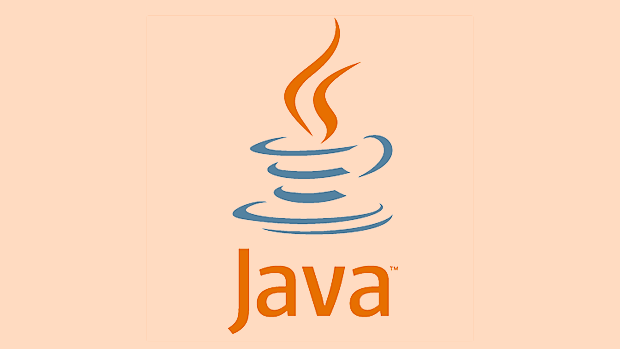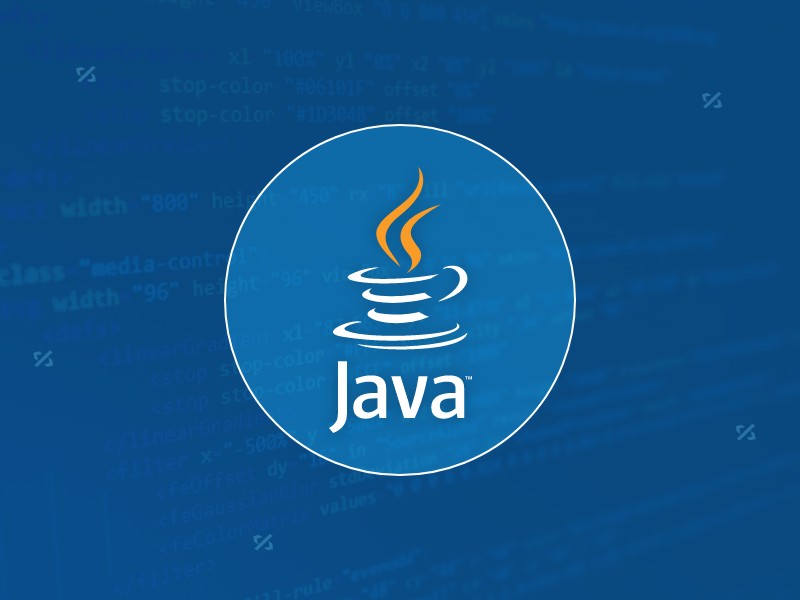Implementing and Managing Thread Pools in Java
Jul 05, 2025 am 02:50 AMJava thread pools are created using ThreadPoolExecutor, and you need to pay attention to the core parameter configuration. 1. The number of core threads controls the number of resident threads. It is recommended to set it to the number of CPU cores for calculation-intensive tasks; 2. The maximum number of threads should deal with burst traffic, and excessively high will increase thread switching overhead; 3. The task queue size needs to weigh the risk of memory usage and task loss; 4. The rejection strategy can be customized, such as throwing an exception or executing by the caller; 5. Shutdown should be called first and then combined with awaitTermination and shutdownNow to ensure safe exit. Directly using the Executors tool class can easily cause memory overflow. The submit() method supports obtaining task results. Future.get() is a blocking operation. Long-term tasks may cause threads to "fake death", so a timeout mechanism needs to be set to avoid it.

Thread pool implementation and management in Java are not advanced technologies, but if you don’t use them well, problems will easily arise. Although it is simple to directly create and destroy threads, it will cause considerable overhead. The rational use of thread pools can effectively control concurrent resources and improve system performance.

Basic creation of thread pools
Java provides the ExecutorService interface and Executors tool class to simplify the creation of thread pools. The most common way is to define a custom thread pool through ThreadPoolExecutor :

ExecutorService executor = new ThreadPoolExecutor(
5, // The number of core threads is 10, // The maximum number of threads is 60, // Idle thread survival time TimeUnit.SECONDS,
new LinkedBlockingQueue<>(100) // Task Queue);This method allows you to control thread pool behavior more granularly. For example, the number of core threads determines the number of resident threads, and the maximum number of threads is used to deal with burst traffic. The size of the task queue is also very critical. It is easy to lose tasks if it is too small, and it may occupy too much memory.
Common misunderstandings: Many people use
Executors.newFixedThreadPool(10)directly. Although this method is convenient, its task queue is unbounded and may cause memory overflow.
How to submit tasks and process results
Thread pools are mainly used to perform Runnable or Callable types of tasks. The difference between the two is that Callable can return the result and throw an exception.
Use
execute()method to submit a Runnable task:executor.execute(() -> System.out.println("Execute a Runnable task"));Use
submit()to get the execution result:Future<String> future = executor.submit(() -> "Task Complete"); String result = future.get(); // Block until the result returns
Note that Future.get() is a blocking operation. If the task has not been completed, the calling thread will be suspended. If you need asynchronous callbacks or the result of combining multiple tasks, it is recommended to consider using CompletableFuture .
Properly configure parameters to avoid common problems
Improper thread pool configuration can lead to many problems, such as low CPU utilization, OOM (memory overflow), task accumulation, etc. Here are some practical suggestions:
- Number of core threads : Selected according to task type. If it is a computing-intensive task, it is usually set to the number of CPU cores; if it is an IO-intensive, it can be increased appropriately.
- Maximum number of threads : Don't set it too high, otherwise it will cause additional overhead due to thread switching.
- Reject policy : When the task queue is full and the number of threads reaches the maximum, the thread pool will trigger the reject policy, and the default is to throw exceptions. You can customize policies, such as logging or discarding tasks.
new ThreadPoolExecutor.AbortPolicy() // Default policy, throw RejectedExecutionException new ThreadPoolExecutor.CallerRunsPolicy() // Execute by the calling thread itself
A more common problem is that the thread pool "fake death" - all threads are waiting for a long task to be completed, and new tasks cannot be entered. This situation can be mitigated by limiting the task execution time or setting a timeout mechanism.
Close the thread pool correctly
The thread pool is not done when used, remember to close it when not in use. Otherwise, the JVM will not exit automatically, which may cause resource leakage.
-
shutdown(): New tasks are no longer accepted, but submitted tasks will continue to be executed. -
shutdownNow(): Try to stop all tasks immediately, and there is no guarantee that the running thread will be successfully interrupted.
The recommended method is to call shutdown first, then wait for a while, and if there are still unfinished tasks, then consider force closing:
executor.shutdown();
try {
if (!executor.awaitTermination(60, TimeUnit.SECONDS)) {
executor.shutdownNow();
}
} catch (InterruptedException e) {
executor.shutdownNow();
}The process of closing the thread pool should consider whether the task can be interrupted, otherwise it may lead to data inconsistency and other problems.
Basically that's it. The thread pool itself is not complicated, but if it is used well, there are many details that need to be paid attention to.
The above is the detailed content of Implementing and Managing Thread Pools in Java. For more information, please follow other related articles on the PHP Chinese website!

Hot AI Tools

Undress AI Tool
Undress images for free

Undresser.AI Undress
AI-powered app for creating realistic nude photos

AI Clothes Remover
Online AI tool for removing clothes from photos.

Clothoff.io
AI clothes remover

Video Face Swap
Swap faces in any video effortlessly with our completely free AI face swap tool!

Hot Article

Hot Tools

Notepad++7.3.1
Easy-to-use and free code editor

SublimeText3 Chinese version
Chinese version, very easy to use

Zend Studio 13.0.1
Powerful PHP integrated development environment

Dreamweaver CS6
Visual web development tools

SublimeText3 Mac version
God-level code editing software (SublimeText3)

Hot Topics
 Selecting Specific Columns | Performance Optimization
Jun 27, 2025 pm 05:46 PM
Selecting Specific Columns | Performance Optimization
Jun 27, 2025 pm 05:46 PM
Selectingonlyneededcolumnsimprovesperformancebyreducingresourceusage.1.Fetchingallcolumnsincreasesmemory,network,andprocessingoverhead.2.Unnecessarydataretrievalpreventseffectiveindexuse,raisesdiskI/O,andslowsqueryexecution.3.Tooptimize,identifyrequi
 What is the `enum` type in Java?
Jul 02, 2025 am 01:31 AM
What is the `enum` type in Java?
Jul 02, 2025 am 01:31 AM
Enums in Java are special classes that represent fixed number of constant values. 1. Use the enum keyword definition; 2. Each enum value is a public static final instance of the enum type; 3. It can include fields, constructors and methods to add behavior to each constant; 4. It can be used in switch statements, supports direct comparison, and provides built-in methods such as name(), ordinal(), values() and valueOf(); 5. Enumeration can improve the type safety, readability and flexibility of the code, and is suitable for limited collection scenarios such as status codes, colors or week.
 Applying Semantic Structure with article, section, and aside in HTML
Jul 05, 2025 am 02:03 AM
Applying Semantic Structure with article, section, and aside in HTML
Jul 05, 2025 am 02:03 AM
The rational use of semantic tags in HTML can improve page structure clarity, accessibility and SEO effects. 1. Used for independent content blocks, such as blog posts or comments, it must be self-contained; 2. Used for classification related content, usually including titles, and is suitable for different modules of the page; 3. Used for auxiliary information related to the main content but not core, such as sidebar recommendations or author profiles. In actual development, labels should be combined and other, avoid excessive nesting, keep the structure simple, and verify the rationality of the structure through developer tools.
 What is the JDK?
Jun 25, 2025 pm 04:05 PM
What is the JDK?
Jun 25, 2025 pm 04:05 PM
JDK (JavaDevelopmentKit) is a software development environment for developing Java applications and applets. It contains tools and libraries required to compile, debug and run Java programs. Its core components include Java compiler (javac), Java runtime environment (JRE), Java interpreter (java), debugger (jdb), document generation tools (javadoc) and packaging tools (such as jar and jmod). Developers need JDK to write, compile Java code and develop with the help of IDE; without JDK, Java applications cannot be built or modified. You can enter javac-version and java-version in the terminal
 VSCode debugger for Java setup guide
Jul 01, 2025 am 12:22 AM
VSCode debugger for Java setup guide
Jul 01, 2025 am 12:22 AM
The key steps in configuring the Java debugging environment on VSCode include: 1. Install JDK and verify; 2. Install JavaExtensionPack and DebuggerforJava plug-in; 3. Create and configure the launch.json file, specify mainClass and projectName; 4. Set up the correct project structure to ensure the source code path and compilation output are correct; 5. Use debugging techniques such as Watch, F8/F10/F11 shortcut keys and methods to deal with common problems such as class not found or JVM attachment failure.
 Windows search bar not typing
Jul 02, 2025 am 10:55 AM
Windows search bar not typing
Jul 02, 2025 am 10:55 AM
When the Windows search bar cannot enter text, common solutions are: 1. Restart the Explorer or computer, open the Task Manager to restart the "Windows Explorer" process, or restart the device directly; 2. Switch or uninstall the input method, try to use the English input method or Microsoft's own input method to eliminate third-party input method conflicts; 3. Run the system file check tool, execute the sfc/scannow command in the command prompt to repair the system files; 4. Reset or rebuild the search index, and rebuild it through the "Index Options" in the "Control Panel". Usually, we start with simple steps first, and most problems can be solved step by step.
 How do I set up VS Code for Java development?
Jun 29, 2025 am 12:23 AM
How do I set up VS Code for Java development?
Jun 29, 2025 am 12:23 AM
To use VSCode for Java development, you need to install the necessary extensions, configure the JDK and set up the workspace. 1. Install JavaExtensionPack, including language support, debugging integration, build tools and code completion functions; optional JavaTestRunner or SpringBoot extension package. 2. Install at least JDK17 and verify through java-version and javac-version; set the JAVA_HOME environment variable, or switch multiple JDKs in the status bar at the bottom of VSCode. 3. After opening the project folder, make sure the project structure is correct and enable automatic saving, adjust the formatting rules, enable code checking, and configure the compilation task to optimize the opening.
 Why use the `Serializable` interface?
Jun 26, 2025 am 01:02 AM
Why use the `Serializable` interface?
Jun 26, 2025 am 01:02 AM
ImplementingtheSerializableinterfaceinJavaallowsaclasstobeconvertedintoabytestreamforstorageortransmission.Asamarkerinterfacewithnomethods,itsignalsthattheclassisreadyforserialization,enablingmechanismslikeObjectOutputStreamtoprocessit.Failingtoimple







